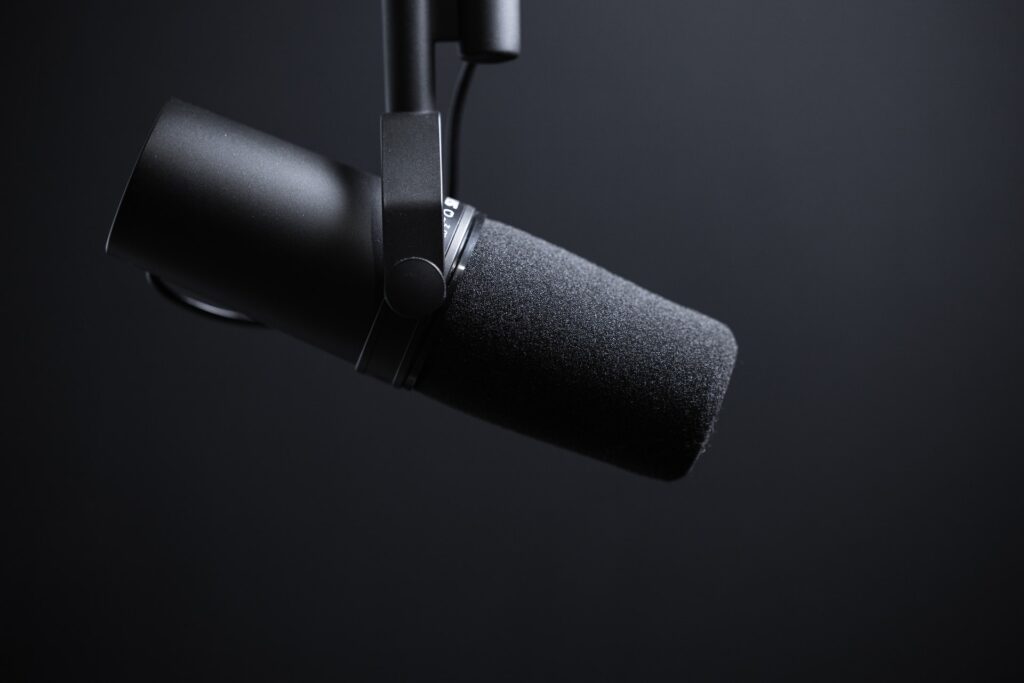How to find the right studio vocal mic for your budget

You’ve decided to do the vocal recordings for your production yourself, at home or in a band practice space prepared for studio sessions. Now you wonder which vocal mic would be best suited for the job – and your budget. While there are no hard-and-fast rules, there are smart ways to pick a microphone, and I’d like to present one to you below, step by step.

1. Determine the purpose of the microphone
The first step, before looking at the actual microphone models available, is to determine what exactly you’ll be using the microphone for. Some key points to look at:
- The musical Genre and characteristics (clean vs. screaming, degree of aggression)
- The most important vocal quality: polished, airy, lush, or dense, powerful? What’s the priority?
- Density of the music/arrangement
- Recording environment: Noise and room echo or dead silent and dry?
Once you have analyzed these aspects, you can move on with the next step:

2. Make an initial selection
Before trying out different microphones, it’s best to narrow down the options you have within your budget. Do this with your analysis form the first step in mind. Some technical pointers to help you with the selection:
- In general, look for mics with a cardioid polar pattern (this is the most common one). Polar patterns are round diagrams that show the sensitivity of the mic depending on the angle the sound comes from.
- Compare the cardioid polar patterns: Tighter/narrower is usually better for DIY recording situations, a more consistent pattern throughout various frequencies is too.
- Low self-noise (or a high Signal-to-noise ratio, S/N) and high sensitivity are important if you’re going to record soft and quiet vocals, whispers, etc.
- The studio standard for vocal mics are large-diaphragm condenser microphones (“LDCs”). However, sometimes a dynamic microphone can do the trick depending on the sound you’re looking for, so don’t rule them out from the start.
- Dynamic mics are much less sensitive than LDCs and a bit less detailed, but this can also be a benefit – especially when you want to record loud and aggressive vocals (rather than a soft ballad) as well as reject noise and suboptimal room sound.
- Don’t aim for “special” mics like tube and ribbon mics, especially if you’re on a tight budget.
- If you want, you can also listen to some sound demos on YouTube to get a rough idea of the microphones’ characteristics. However, be careful and always take them with a grain of salt – you don’t know how the voices and the rooms in these demos sound in person, what the exact signal chain was, etc.

3. Find a mic to match your voice
Different people obviously have different voices, therefore there’s no one-size-fits-all solution when it comes to finding the right microphone. The natural sound of the voice always needs to be considered.
For example, a “midrangey” voice will probably benefit from a mic that emphasizes high and low frequencies. On the flip side, a voice that sounds a bit scooped in the mids might benefit from a mic that’s a little midrange heavy. The goal is to know exactly what mic characteristics best complement and enhance the voice you want to record.
After you’ve made your initial selection, narrow down your options even further to just a few mics. After that, it’s best to try out these most promising contenders in a shootout. You’ll probably only do this once, unless you want to upgrade to a different price range or your needs change in the future.
Here’s a little guide for you on how to find the right mics to test and do the shootout:
3.1. Analyze
If you don’t already know this from past recording experiences, analyze the natural characteristics of the voice you want to record. The best way to do this is the following:
- Record a demo, don’t just judge by the sound during practice or live performance.
- If you have an existing instrumental mix of one of your songs, use that to do your testing.
- Record in a style similar to the production you plan to do, using just an SM58 or similar that you have in your practice space.
- Listen in context! The denser the arrangement, the more important it is to judge with all the other instruments playing so you know how the voice will behave in an actual production.
- Pay close attention to the balance of low, mid, and high frequencies of the vocal and how they come through in the rough mix.
- Make notes on how you would describe your voice based on your demo. Is it very dynamic (varying in volume a lot), boomy or thin? Does it have a lot of midrange frequencies or rather little? What changes would you make for it to sit in the mix better?
3.2. Further Preselection
Based on your findings from the last step, find the 2-3 mics from your preselection that should get you the closest to your desired result. You can take another look at the technical specifications, the frequency response, and the polar pattern for that.

3.3. Shootout time!
Ideally you would use the same demo as before and re-record the vocal part with all the mics you want to test. You can of course also record something different, but make sure it’s still very close to the use case you intended the microphone for. If you can’t do a shootout for whichever reason, just skip this step.
3.4. Final Selection
Make the final judgment what mic within your price range is right for you. If necessary, return the mic(s) you found not to match well.
3.5. Congratulations!
You should now have a mic that works well with the particular voice you want to record. Should that not be the case, you would have to repeat the process with different mics – that’s very unlikely though.
4. Some more tips (aside from the mic selection itself)
Before you test mics in your own recording space (or the recording environment you intend to use for your sessions), make sure you’re getting the most out of it. Acoustically, as well as setup- and placement-wise, there are some things to consider. For more information on DIY vocal recording, check out the main blog or this blog post on home studio acoustics.

5. Vocal mic recommendations
The following are some good vocal mic options for different budgets, but all still relatively affordable. They’re also all pretty versatile, meaning they are not only good for vocals but a lot of instrument applications as well.
- Rode NT-1A
- Aston Origin
- SE X1A, X1S, SE 2200, SE 2300
- Audio Technica AT2020, AT2050, AT4040, AT4050
- Lewitt LCT 240 PRO, LCT 440 PURE
- AKG C214
- SM 7 B
- Oktava MK-105
List in no particular order.
Now go on and record some great music you can share with the world!
You don’t want to handle the entire production and mixing process yourself? Click below to learn how I can help you out.

